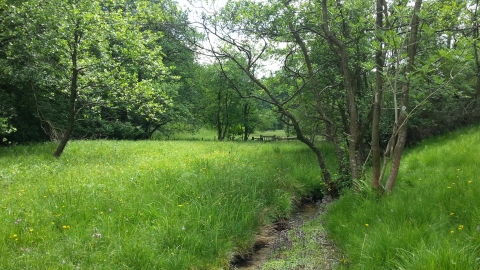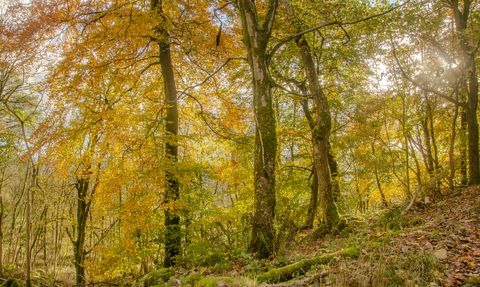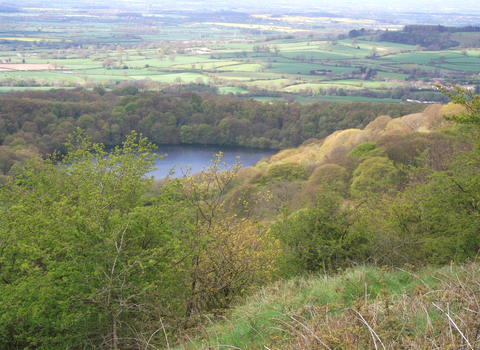
Ashberry Nature Reserve - Jono Leadley

©Alex Mustard/2020VISION

WildNet - Philip Precey

Great spotted woodpeckers © Jon Hawkins - Surrey Hills Photography
Ashberry Nature Reserve
Location
Know before you go
Dogs
Dogs are allowed on the public right of way on leads.
When to visit
Opening times
Open at all times. We recommend a half day trip for this reserve. For a longer outing, why not visit nearby Rievaulx Abbey and Rievaulx Terrace and Temples.Best time to visit
May to SeptemberAbout the reserve
This timelessly tranquil valley owes its mosaic of rare habitats to the site’s underlying geology. A beautifully clear stream – in which freshwater shrimps and white-clawed crayfish live – and calcium-rich springs flow through the site. The marshy valley bottom hosts rare plants including bird’s-eye primrose, globeflower, marsh hawk’s-beard and grass-of-Parnassus. In the woods, search for birds including nuthatch, treecreeper, great spotted woodpecker and redstart. You might see fallow and roe deer on the valley sides too.
Contact us
About
The habitats within the nature reserve are heavily influenced by the underlying geology of the site. Glacial melt water carved out the steep sided valley, cutting through different rock layers. The valley forms part of a system of small steep sided valleys in this area with tributaries of the River Rye running through them. The very thin soils on the upper slopes of the valley support areas of unimproved limestone grassland and woodland with a very high diversity of specialised plant species. The middle and lower slopes of the valley are also wooded and contain a range of bird species including nuthatch, treecreeper and wood warbler.
In the valley bottom there are areas of neutral grassland, mire and carr woodland. Where the calcium rich springs that flow through the site reach the valley bottom extensive areas of marsh exist, with many rare plant and insect species associated. These include bird's-eye primrose, globe flower, marsh hawk's beard and grass of Parnassus. Black bog-rush occurs in two of the larger areas of springs, and common butterwort and marsh lousewort (or red rattle) are widespread.
Red, fallow and roe deer are present in the area and an early morning visit could be rewarded with a sighting of them grazing the grassland along the steeply wooded valley sides. Freshwater shrimps and white-clawed crayfish are found in the stream that runs through the site.
Seasonal highlights
- Spring: Plants - Wood anemone; Invertebrates - Orange-tip butterfly; Birds - Blackcap; Chiffchaff
- Summer: Plants - Globeflower; Marsh helleborine; Bird's-eye primrose; Chimney sweeper; Crustaceans - White-clawed crayfish
- Autumn: Mammals - Fallow deer; Red deer
- Winter: Birds - Great-spotted woodpecker; Marsh tit; Nuthatch
Directions
Public transport
A bus service runs to nearby Helmsley from Scarborough, Malton and York. In the summer months Moorsbus run a service between Helmsley and Rievaulx.
By car
½ mile west of Rievaulx and about 3 miles north west of Helmsley. If approaching from Helmsley, take the B1257 Stokesley road for approximately 1½ miles and take a left hand turning onto Scawton road. Descend through the woods, turn left across the river Rye and turn right towards Old Byland after a further ¼ mile. Very limited road side parking, access to the nature reserve is via a small gate.

The autumn colours were even more beautiful when the sun came out
Photo Credit - Telling our Story Volunteer, Sara

